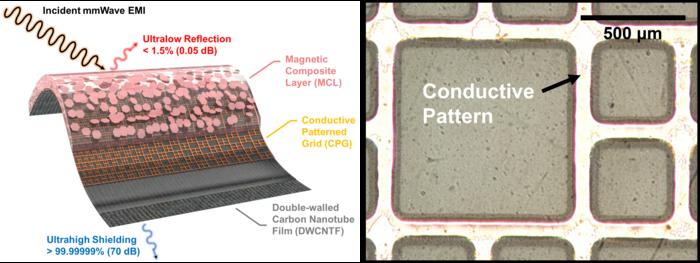Summary: Korean researchers have developed a groundbreaking material less than half a millimeter thick that can absorb over 99% of electromagnetic waves across multiple frequency bands. This ultra-thin film could revolutionize electromagnetic shielding for 5G/6G communications, WiFi, and autonomous vehicle radar systems, while solving longstanding issues with wave interference.
Journal: Advanced Functional Materials, October 1, 2024, DOI: 10.1002/adfm.202406197
Reading time: 4 minutes
A Breakthrough in Wave Absorption
In an era where wireless devices are everywhere, electromagnetic interference has become a growing concern. Now, researchers from the Korea Institute of Materials Science (KIMS) have developed a solution that could transform how we protect our electronic devices.
The team, led by Dr. Byeongjin Park and Dr. Sang Bok Lee, has created the world’s first ultra-thin composite material capable of absorbing more than 99% of electromagnetic waves across multiple frequency bands while reflecting less than 1%.
Solving a Persistent Problem
Traditional electromagnetic shielding materials have significant limitations. They typically reflect over 90% of waves while absorbing only 10%, which can cause secondary interference problems. Additionally, most materials can only absorb waves within a single frequency band.
“As the applications of 5G/6G communications continue to expand, the importance of electromagnetic wave absorption and shielding materials is growing,” notes Senior Researcher Byeongjin Park of KIMS.
Innovation Through Smart Design
The research team’s approach combines several innovative elements. They modified the crystal structure of ferrite to create a magnetic material that selectively absorbs specific frequencies. This material was then incorporated into an ultra-thin polymer composite film with specially designed conductive patterns on its back side.
The final component is a carbon nanotube thin film that enhances the material’s shielding capabilities. This combination creates a flexible, durable material that maintains its effectiveness even after thousands of folding cycles.
Real-World Applications
The implications of this technology are far-reaching.
“This material has the potential to significantly improve the reliability of wireless communication devices such as smartphones and autonomous vehicle radars,” adds Park.
The material’s flexibility and durability make it particularly suitable for emerging technologies like rollable phones and wearable devices. Several domestic material companies have already acquired the technology through transfer agreements, and it’s currently being implemented in communication devices and automobiles.
Further Reading:
– Original Research Paper
– Korea Institute of Materials Science
Enjoy this story? Get our newsletter!


